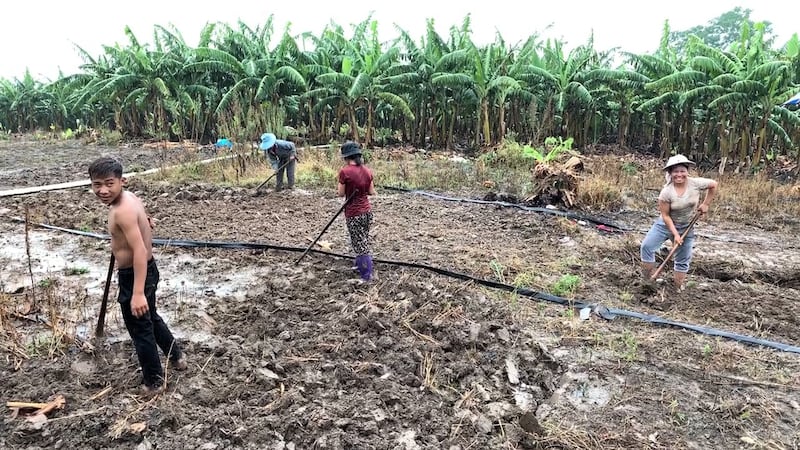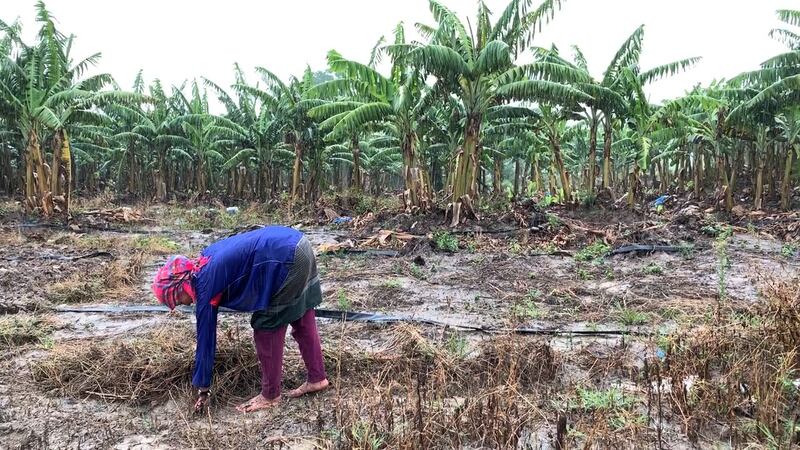A 20% year-over-year increase of agricultural exports from Laos in 2023 was largely on the back of Chinese plantations, according to trade officials, meaning that the country will reap few of the profits.
Members of the business community told RFA Lao that the government needs to review its approach to foreign investment while improving its agricultural output to avoid a deepening trade deficit and improve the living standards of farmers in Laos.
The Lao Ministry of Industry and Trade recently reported that last year Laos exported 9.5 million tons of agricultural products worth US$1.4 billion – an increase of just over 20% from 2022.
However, the ministry acknowledged that most of the exported goods were produced by Chinese investors who leased land and grew vegetables and fruit in Laos to sell to China.
Produce exports from Laos are largely cassava, potatoes, coffee, bananas and sugar. The country exports most of its products to China, Vietnam and Thailand, respectively.
Chinese nationals run 933 projects in the agricultural sector in Laos, and their investments in the country are on the rise. Most of the projects adhere to what the Lao government refers to as the “2+3 System,” in which Laos provides land and labor, while foreign investors supply capital, expertise and a market for goods.

An official with the Ministry of Industry and Trade confirmed to RFA that most agricultural products in Laos – including cattle, vegetables and fruit – are produced by Chinese nationals for export to China, rather than by Lao farmers.
“China won’t allow goods produced by Lao farmers to enter China,” said the official who, like other sources interviewed for this report, spoke on condition of anonymity due to security concerns. “They only accept goods produced by Chinese factories and investors that meet their quality standards.”
The Lao government will only receive a small portion of the US$1.4 billion in exports last year through taxes, tariffs, land concession fees and transportation fees, he added.
Real value of foreign investment?
A Lao businessman in Luang Prabang province said the government and the people of Laos “will only get 10% of [the export value] because most goods were produced by the Chinese.”
He questioned whether the Lao government – and by extension, the people – gains more than it loses from foreign investment.
“The government must be more competitive by improving the quality and increasing the quantity [of agricultural products]; if not, Laos can expect to face a large trade deficit every year,” the businessman said. “To do that, the country must increase its knowledge, budget and access to modern technology.”

The Lao Ministry of Industry and Trade reported that in 2023, Laos imported US$6 billion worth of products and exported $5.3 billion, resulting in a trade deficit of US$700 million.
Laos can export 33 agricultural products to China – most of them fruits, vegetables and cattle – 15 products to Vietnam and 15 products to Thailand. China is the main market for Lao exports and the market is growing annually.
An official with the Asian Development Bank, or ADB, told RFA that in order to grow its exports, Laos must produce more of its own goods and improve their quality.
“China has opened up its market for Lao products – particularly bananas, cassava, corn and fruit,” the ADB official said. “Laos exported about 300 million tons of bananas last year. These export can boost the Lao economy.”
Translated by Max Avary. Edited by Joshua Lipes and Malcolm Foster.
